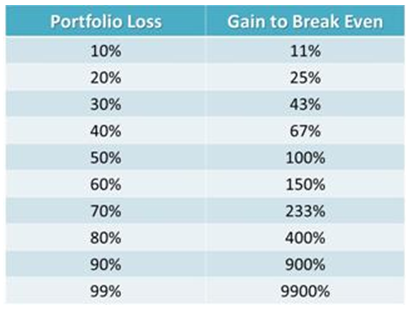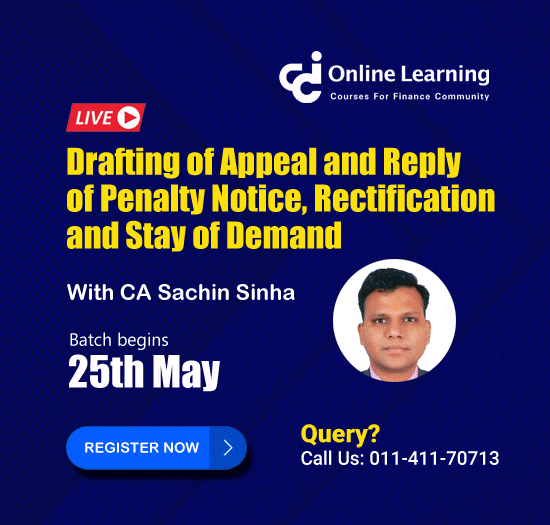Everyone hates losses, yet most of the traders and investors make losses in the markets. One might be a good analyst but it takes a control over emotions, discipline and patience to benefit from any kind of strategies and analysis. Losses must be taken as a fees paid for a course in which you have learnt something and whatever mistakes you made then should be noted down and never repeated again.
It is a well known fact that most of the people out there sit on their losses hoping that the price of the stock will shoot up and they will make profits. With this hope many of them start averaging. Well, sometimes this strategy works but most of the times the losses multiply. Also, there is a thin line of difference between "Buy on Dips" and averaging a loss. Buy on dips is when the stock is on an uptrend and there is a 5% downside till the support. The stock which we assume will continue its uptrend might either shoot up or touch the support before further upmoves. In such cases, it might be good to add some quantity on a 2-2.5% dip and hold with SL as per your initial judgement. Ace investor Rakesh Jhunjhunwala has always said that his strategy is: Add more and more if the price of the stock is rising, but NEVER add if the stock is giving you losses. Now everyone has a different approach and never should you to blindly follow someone else's approach. Rakesh Jhunjhunwala doesn't put stop losses for his long term investments, but not everyone can take such a big risk of not having a stop loss.
There is another funny part about investor/trader psychology! Even when the stock is showing a small profit, traders and investors get tempted to book profits. Many people who buy a stock for long term (3-4 years view) book it in a week for 10% profits. This is bad discipline and in the long run it could be capital erosive. Think of it, you are ready to sit for years with 30-40% losses or even more but the moment you see a 10% profit you book it. Won't this erode your capital? It will! Unless you have a 90%+ success rate in picking up stocks. Also, never let your trades become investments and investments become trades. This again requires control of emotions and a lot of discipline.
Every penny which we invest has a time value, that is it can give us a risk-free return over a period of time. This risk-free return is from fixed deposits and treasury bonds. This risk free return is what we have to beat to make sure that we have earned that extra buck from the market! For example if the fixed deposits are giving 9% returns, we need to make atleast 10% to beat it! (Ignore the taxation part). The extra amount which we earn over the risk-free return is the reward for taking risk. If you can't take any risk then it is better to go for the safer zones of investments. So, every penny invested as our capital matters. Now let's come to the tricky part which might open your eyes to harsh realities of losses, returns, etc etc. For better understanding, let's proceed with an illustration.
You have a total of 100 bucks to invest/trade. You lose 10% of it in the beginning. So how much do you need to earn now to climb back to profits? Not 10% but 11%. This means that you need to earn back more than what you lost! Now suppose you lose 25%, how much do you need to earn now? You need 33.33%.

The table should make it clearer.

above chart makes it clear that if you lose half your money, you need to double it! And even then you have just reached break even! At the end of the year your portfolio must have given more than what the risk-free rate of return is! And it is true: Doubling your money is much tougher than making it half.
With every penny that you lose, your capital reduces and so does your earning potential. Making your portfolio value go to 110 from 100 is easier than making 110 from 80 or 75. Only money has the power to make more money and stock markets are a place not to earn wealth but to multiply it.
Now let's see why to protect your profits. Suppose you earn 20% returns and your portfolio goes upto 120! Now you lose 20% and your portfolio's value be now be 96. So, the higher your portfolio value goes up, the higher is your risk and the higher is the reward! This is the compounding power of money. Many traders and investors follow a strategy of transferring their profits to fixed deposits and government bonds and continuing only with the initial capital. It all depends on your risk appetite.
So these are the reasons why people say it is hard to earn profits and easy to make losses. Every penny has the power to earn. A penny lost also takes along with it potential earnings and leaves a heavy burden on the remaining capital. That is why it is important to ensure a good risk-reward ratio in trades and investments and also protect capital. If only capital is protected then money can be made. But this is why risk has to be taken! If you feel that picking up stocks is a difficult job or not your cup of tea but you want to exploit the earnings the stock markets can give then the best way is investing systematically through ETF's.
Bio: I am Raghav Behani, undergoing my articleship. I have been actively practicing technical analysis for past 4 years. Of recent I have started developing trading strategies too.








 CAclubindia
CAclubindia

